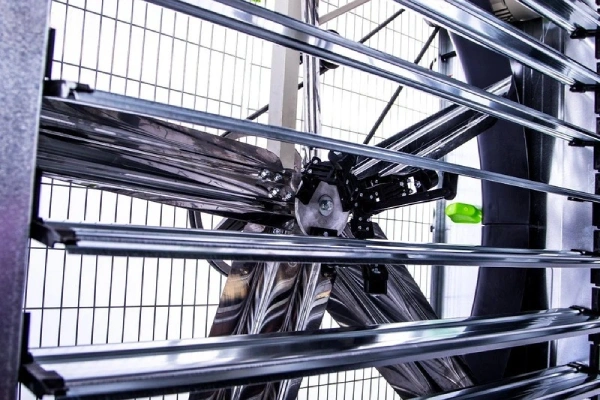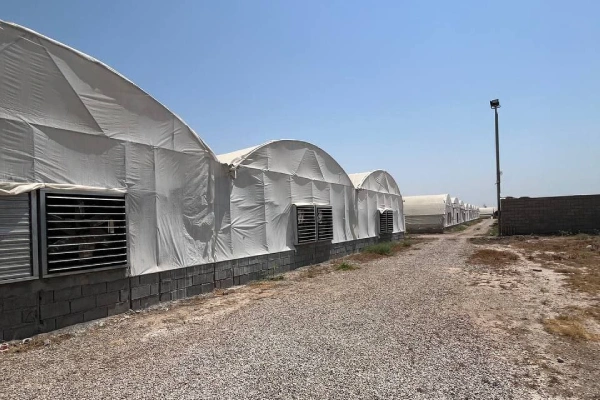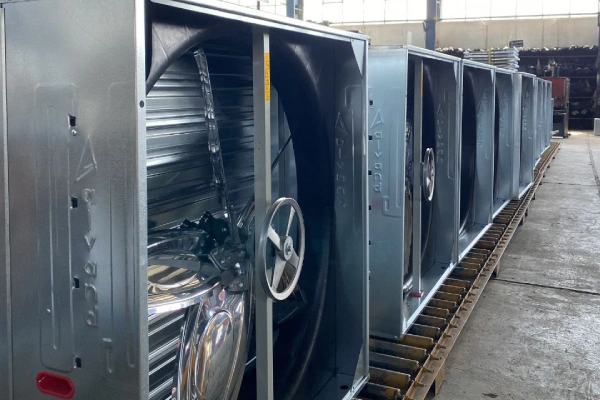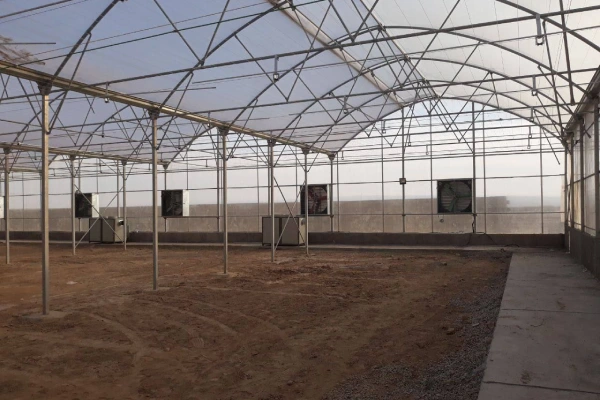How to choose an exhaust fan + selection guide

Proper ventilation is the key to a healthy and efficient environment. Polluted air, high humidity, and unpleasant odors not only affect the quality of life, but can also harm the health of people and equipment. Exhaust fans, as one of the important ventilation tools, play a significant role in creating a clean and healthy environment. By removing polluted and humid air from the environment, these devices help improve air quality, reduce humidity and temperature, and thus increase productivity. By reading the article How to Choose an Exhaust Fan, you will be able to choose the best exhaust fan according to your needs and benefit from its benefits.
Table of Contents
- The Importance of Using an Exhaust Fan in Different Environments
- Applications of Axial Exhaust Fans
- Step-by-Step Guide to Choosing an Exhaust Fan
- Alvand Industrial Group; A Leader in the Ventilation Industry
The importance of using exhaust fans in different environments
Exhaust fans play a very important role in improving air quality and environmental conditions. By sucking air in and exhausting it outside, these devices help control various factors such as humidity, temperature, and air pollution..

- Reduce Humidity: High humidity can damage structures, equipment, and products. Exhaust fans prevent the growth of mold, mildew, and rust by removing moist air.
Temperature Control: In hot seasons, exhaust fans help cool the space by removing hot air from the environment, thereby improving working and living conditions.
Eliminate Odors: Odors from industrial, cooking, or other sources can negatively affect people’s health and morale. Exhaust fans create a healthier and more pleasant environment by removing these odors.
Improve Air Quality: Dust, smoke, and other pollutants can be present in the air and cause respiratory problems. Exhaust fans are effective in improving air quality by filtering the air and removing contaminants.
Increase Work Efficiency: Fresh, clean air increases employee concentration and productivity. Also, reducing temperature and humidity in workplaces provides better conditions for workers.
Axial-axial exhaust fan applications
Axial-axial wall greenhouse exhaust fans are widely used in various industries due to their simple structure, easy installation and reasonable price. These types of fans are very suitable for ventilation of large and open environments due to the direction of air movement parallel to the impeller axis. Below are some of the important applications of these types of fans:

1. Industries
Ventilation of production halls: To remove dust, smoke and fumes from the production process.
Cooling of industrial equipment: By creating air flow, they help to cool the equipment and reduce the ambient temperature. Jet heaters can also be used for heating.
Ventilation of warehouses: To prevent moisture accumulation and create a suitable environment for storing products.
Ventilation of parking lots: To remove toxic gases resulting from vehicle combustion.
2. Greenhouses
Temperature and humidity regulation: Exhaust fans, like industrial ventilation fans, help to maintain the desired temperature and humidity for plant growth by removing warm and humid air.
Preventing dew formation: By creating air flow, they prevent dew formation on plant leaves.
Uniform distribution of CO2: By creating air flow, they are effective in evenly distributing carbon dioxide in the greenhouse environment.
3. Poultry farms
Temperature and humidity control: By removing hot and humid air, they help maintain the appropriate temperature and relative humidity required for poultry growth.
Preventing the spread of unpleasant odors: Exhaust fans such as poultry inlets improve the air quality of the poultry farm environment by removing ammonia and other unpleasant odors.
Reducing the risk of disease: By creating air flow, they help reduce the concentration of pollutants and pathogens.
Step-by-step guide to choosing an exhaust fan
Choosing the right exhaust fan is a crucial step in improving air quality and environmental conditions. A proper choice will not only help improve the efficiency of your ventilation system, but will also help reduce energy costs and extend the life of your equipment. In this section, follow our guide to choosing an exhaust fan.

Step 1: Determine the required capacity and power
Required air volume: The first step is to calculate the volume of air that must be removed from the environment per hour. This amount depends on factors such as room volume, air pollution level, ambient temperature, and the number of people present in the environment. For accurate calculations, it is recommended to use specialized software or consult a facility engineer.
Static pressure: Static pressure refers to the resistance that air offers to flow through ducts and channels. This pressure depends on various factors such as the length of the channel, the number of elbows, and the type of filter. The higher the static pressure, the more powerful technical exhaust is needed.
Step 2: Select the appropriate type and size of exhaust fan
Types of exhaust fans: Exhaust fans are produced in various types such as axial, centrifugal, ceiling, wall, and duct. Each of these types has its own advantages and disadvantages and is suitable for different applications.
Exhaust fan size: The size of the exhaust fan should be proportional to the required air volume and the static pressure of the system. Larger exhaust fans have a greater ventilation capacity, but they are usually noisier and more expensive.
How can you comply with the principles of animal hygiene at the lowest cost and prevent possible losses from disease in your livestock? To answer this question, just click on the article in question.
Step Three: Check the noise and vibration level
Acceptable noise level: The noise level of the exhaust fan should be selected according to the environment in which it is installed. For residential and office environments, low-noise exhaust fans are preferred.
Vibration: Excessive vibration of the exhaust fan can damage the building structure and also cause excess noise. Therefore, choosing a technical exhaust with low vibration is very important.
If you want to know how to calculate industrial ventilation, you can go to the article in question to get the information you need.
Step 4: Pay attention to energy consumption
Energy efficiency: Exhaust fans with high energy efficiency consume less energy, thereby reducing operating costs.
Energy label: Some exhaust fans have an energy label that indicates their energy consumption.
Step 5: Compare prices of different models
Initial price: The price of exhaust fans depends on various factors such as brand, type, size, and technical features.
Additional costs: In addition to the initial price, installation, repair, and maintenance costs should also be considered.
Energy costs: High energy consumption of exhaust fans can result in significant costs in the long run.
Step 6: Choosing the right exhaust fan for polluted environments
Material type: In polluted environments, technical exhaust should be made of materials that are resistant to corrosion and wear.
Filter: Using an appropriate filter is essential to prevent contaminated particles from re-entering the environment.
Suction power: The exhaust fan must have sufficient suction power to remove contaminated particles.

Important points in choosing an exhaust fan
Consult with an expert: It is better to consult with an expert from Alvand Industrial Group before purchasing an exhaust fan to select a technical exhaust that suits your needs.
Professional installation: Incorrect installation of an exhaust fan can lead to a decrease in its efficiency and cause other problems. Therefore, leave the installation to professionals.
Regular maintenance: To increase the life of the exhaust fan and maintain its efficiency, it should be cleaned and serviced periodically.
Choosing the right exhaust fan is a complex process that depends on various factors. By considering the items mentioned in this article, you can choose a technical exhaust that meets your needs.
Conclusion
In this article, you have studied how to choose an exhaust fan. Choosing the right exhaust fan is key to improving air quality and environmental conditions. Several factors, including the required air volume, static pressure, fan type and size, sound level, energy consumption, and corrosion resistance, play a role in this choice. Considering the application and environmental conditions of each space, choosing the right exhaust fan is essential. Using an exhaust fan not only helps reduce air pollution and unpleasant odors, but also provides a healthier and more efficient environment by controlling temperature and humidity. For this reason, consulting with the experts of Alvand Industrial Group before purchasing and installing an exhaust fan is highly recommended in order to choose the best option. Ultimately, choosing and installing the right exhaust fan is a valuable investment for people’s health and increasing productivity.
Alvand Industrial Group; A Leader in the Ventilation Industry
Alvand Industrial Group is one of the pioneers in producing various types of heating systems and air conditioning equipment in Iran. This complex, utilizing technical knowledge and modern equipment, produces and supplies a wide range of high-quality products. One of the most popular products of this company is exhaust fans, which are produced in different capacities. For more information about Alvand products and to purchase various types of exhaust fans, visit the company’s official website or contact the experts of Alvand Industrial Group.




 2025-01-07
2025-01-07 32 minute
32 minute
 0 comment
0 comment